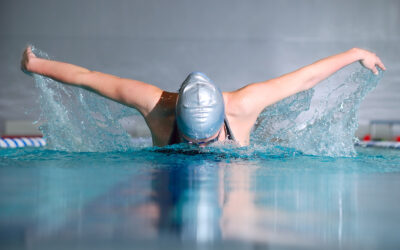I have always been a low tech exerciser and competitor. In my sports training I have mainly used heart rate and time as measures of my effort and intensity. There are several reasons for my choice.
First, learning new technology can be frustrating. I don’t enjoy spending my energy figuring out new electronic gadgets. I quickly go nuts and lose patience with this sort of task. Just mastering the buttons on my heart rate monitor causes me stress and several references to the manual.
Second, time! Not only does it take me extended minutes to conquer the device but then there is the time to find the equipment, put it on, program it for the workout and when I’m done – download it to the computer and analyze what I did. I’d much rather be outside moving than fretting about setting my heart rate zones so my monitor can annoyingly beep to inform me I’m going too hard or too easy. I don’t like to be told how to workout by anyone or anything!
Third, I like to be in touch with my body – breathing rate, fatigue level, heart effort, pain – and become distracted when using mechanical aids. Focusing on the signals from my body is the best way for me to gauge my workout and know if this is a good day for hard intervals or if easy recovery is what I need. Using technology to measure and judge my effort has lead me to over training and burnout as I pushed and strained to complete the prescribed intensity required.
Five questions to determine your choice
1. What are your goals? A high tech training aid will enable you to closely monitor your workouts and adjust your training for optimal results. If you are a serious competitor this can be very important. Results of today’s workout will help you appropriately select your next day’s effort. Additionally, knowing what your body feels like at an all out effort and having the confidence that you can maintain it can win you the race.
2. Are you motivated by data? Seeing your average heart rate go down for the same effort, a reduction in time for a set distance, or an increase in watts produced can be inspiring. Watching the numbers can also push you to keep your effort high when you might otherwise feel like taking it a bit easier.
3. Including intervals in your training? This is where I find using a monitoring system most valuable. I am a big fan of intervals for building muscular endurance, aerobic and anaerobic capacity and weight loss. In my opinion everyone should include intervals in their exercise and training. What you are trying to achieve with your fitness will dictate your interval selection. Where I especially recommend using technology is for the high intensity, low duration intervals.
4. Using active recovery? It has been said that many athletes don’t go hard enough on their hard days and go too hard on their easy days. Consequently, just as I suggested monitoring on your hardest interval days to maintain your intensity I also advise using technology on your easy days so that you keep the effort low and recover fully. This can be hard to do particularly if you are feeling good on a recovery day or are training with a group. A heart rate monitor may help you control your effort to the desired intensity.
5. Is technology holding you back? I read an article implying that using technology could actually be preventing fitness gains. If the watch beeps you need to back off. Or do you? True maximal heart rate can only be determined with an advanced stress test. So, most of the time these ranges are based on predictions from a sub-maximal test or your age. Perhaps you can go harder than the numbers show. Try it! Set your device to record or turn off the alarms and tune into your body and simply notice the data. Don’t let it drive your effort and see how you preform.


